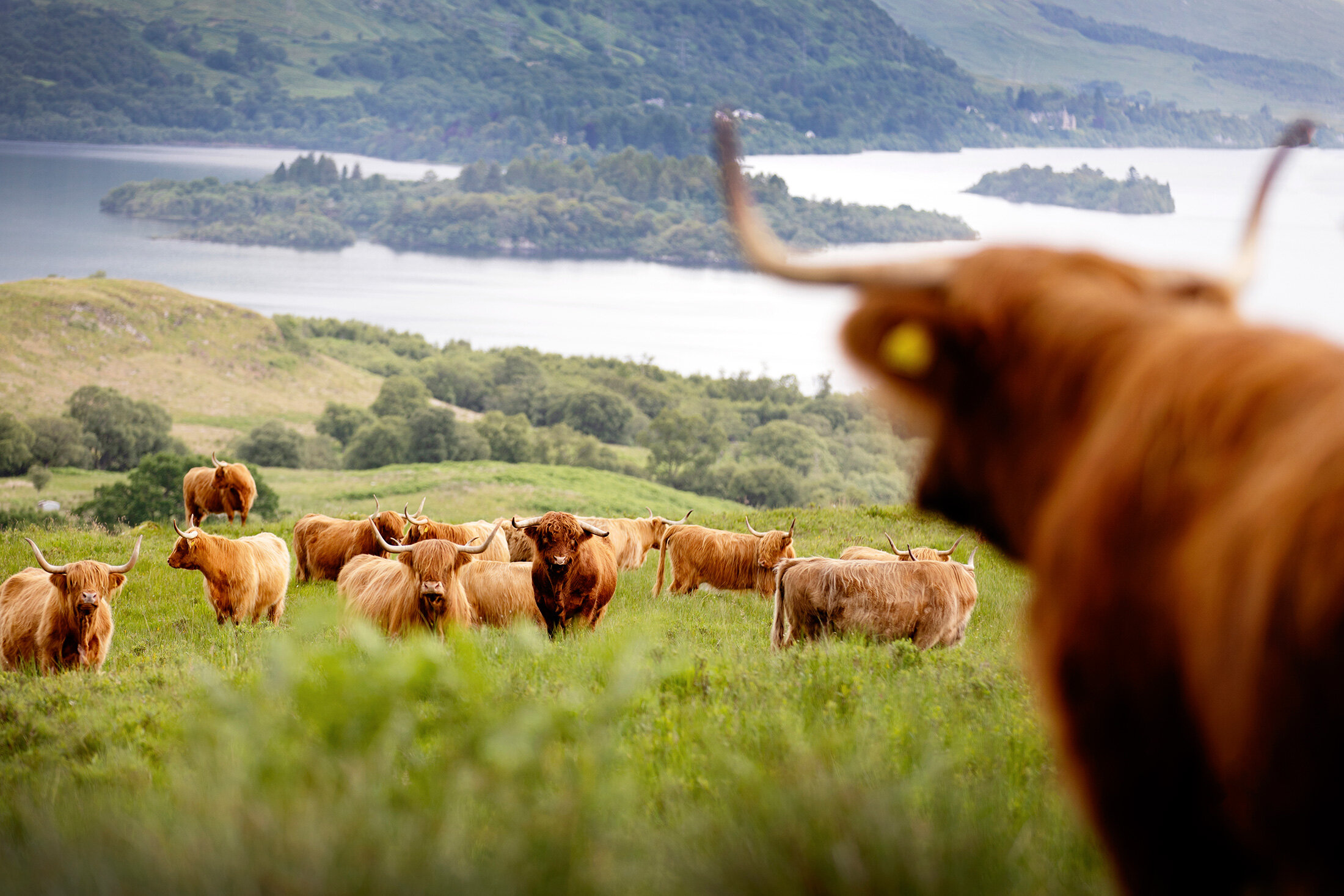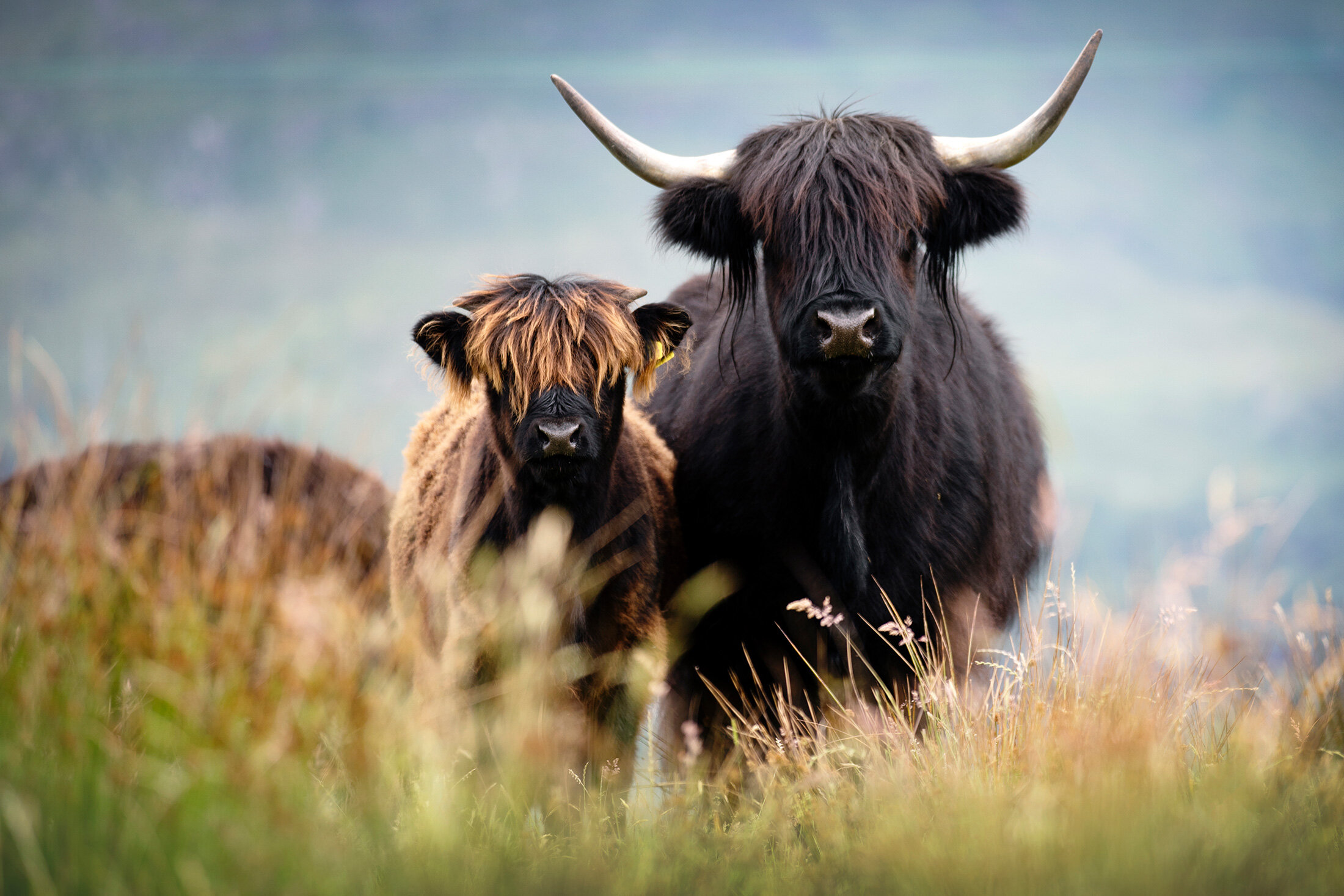
Why choose Highland Cattle?
Highland Cattle have a variety of characteristics that make them suitable for many different type of breeders and beef producers, and many different farming systems.
They can be found at many altitudes from sea level to many thousand feet, and at any latitude from Canada and Finland to Texas. They can cope with many climates and are extremely hardy.
They are ideal for farmers and breeders with thousands of acres or people with five to ten acres. People have them on estate land, in woodland, on national nature reserves, ordinary farmland and in many more types of environment.
In short, Highland Cattle are very versatile.
Highland Cattle are low input and hardy
Highland Cattle can live in the hardest conditions and browse on rough, otherwise unproductive uplands. This makes them ideal for low input extensive farming.
They are also extremely hardy. This mean that Highland Cattle are often only brought back to the home farm for final production. They can also fit into any farming system from fattening in sheds to producing beef on grass alone. As they can live outside all year round, there’s little need for the initial investment in sheds.
In short, they are very good converters and extremely hardy, which is why you will see them in a variety of environments from mixed farms in the lowlands, to very rough grazing on hills and mountains across the UK.
They play an important role in conservation
Highland Cattle are making a real economic contribution to hill and upland areas. Their browsing habits also make them the cattle of choice for many conservation projects, like grazing Sites of Special Scientific Interest, establishing hay meadows, opening up forest floors and regenerating heather moorland.
In addition, Highland Cattle grazed at low density in natural woods, moorlands, wetlands, lochs, coastal and upland areas are also playing an important role in nature conservation management. Through their grazing and dunging, they recycle nutrients and can be a key part of the natural environment, leading to a greater diversity of plant species and a more complex vegetation structure.
All in all, the unique qualities of the pure Highland cow make it the first choice for conservation grazing. Therefore, it will be an asset to any farm embarking on an environment nature recovery scheme for the future.
The key to success in commercial production
Most importantly, they are key to the production of commercial hill cows, raising pure Highland calves or Highland crosses. The cross-Highland cow itself inherits the hardiness of the pure Highlander plus the vital ingredient of hybrid vigour.
When Highland cows are put to the Beef Shorthorn bull, for example, they produce animals of quality and stature that are capable of being out wintered on moorland or hill ground. They go on to produce a high-quality beef carcass on a low input farming system. They can also be crossed with other native cattle such as Aberdeen Angus, as well as Continental cattle, and they are making an outstanding contribution to food conversion.
A number of commercial breeders sell cattle into the Dovecote Park/Waitrose scheme. To be eligible for this scheme, the cattle must all be sired by a registered Pedigree Highland bull. Alternatively, when crossing with a Shorthorn bull, offspring can be sold into the Morrisons scheme.
Highland beef has many benefits
Beef from Highland Cattle is low in cholesterol and high in protein and minerals – and its taste is unsurpassed by the beef from many other breeds.
Many shoppers want to know more about the lifestyle and provenance of their beef, which is why they appreciate the natural healthy life of Highland Cattle. They produce high quality beef that isn’t forced, but comes from grass-fed native animals that are supporting conservation and biodiversity.
What’s more, increasing numbers of consumers are turning to farm shops and farm gate sales for their beef where they can see the animals grazing and talk to producers. This market ensures a premium price for the beef.
A versatile, docile and long-lived breed
The Highland cow has wide hips, and calves easily outside with usually little or no intervention. The calves can achieve a daily weight gain of around 0.8 to 1kg without additional feed and can reach half their mother’s weight in a year.
They are generally docile animals and will take to halter training easily. They can be seen in many a show ring around the country.
What’s more, Highland Cattle often live a long and productive live and continue calving well into their late teens.





